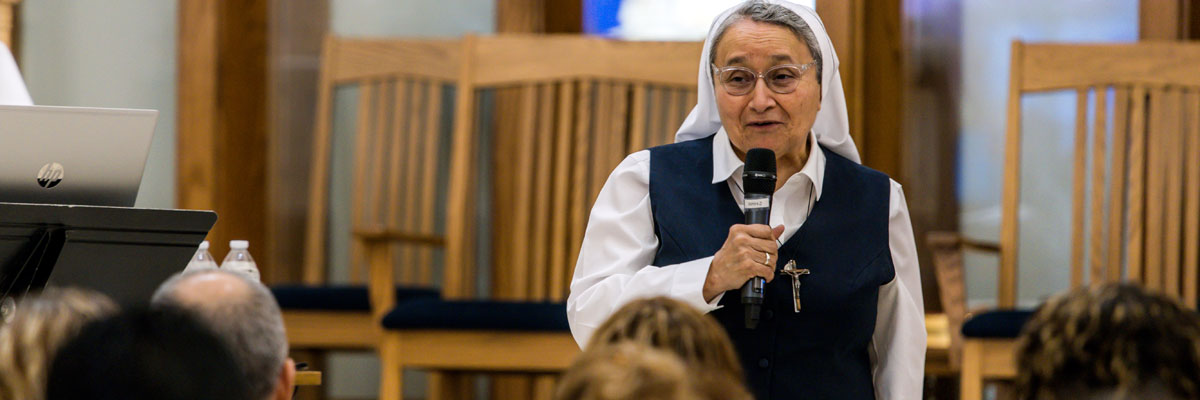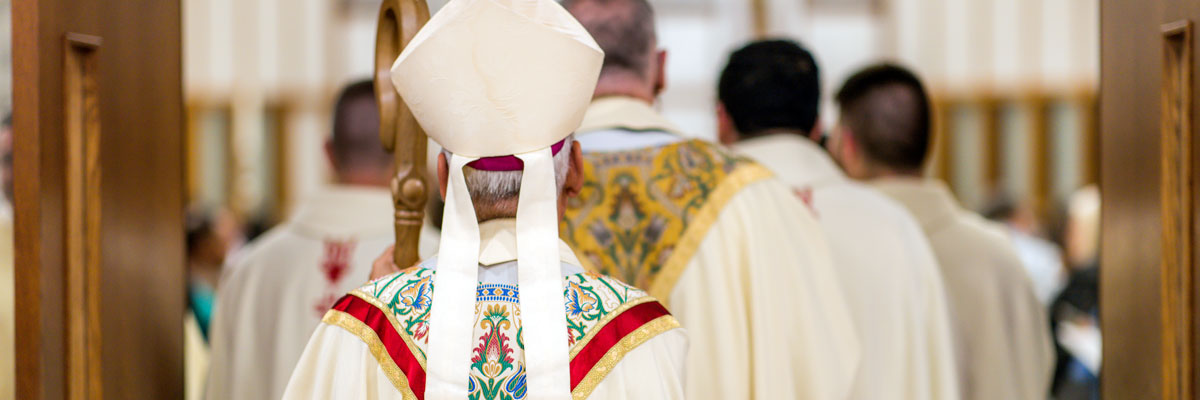Official Website of the
Catholic Diocese of Little Rock
Dying, rising is pattern of Christian life
Published: March 5, 2011
This is the 12th column in a 13-part series
By Cackie Upchurch
Director of Little Rock Scripture Study
“For our sake he was crucified under Pontius Pilate; he suffered, died, and was buried. On the third day he rose again in fulfillment of the Scriptures …” Our voices unite to recite these words from the Nicene Creed every Sunday as we gather to celebrate the Eucharist. This is the core of our faith and the central truth of the Good News.
 Paul, one of the Church’s greatest evangelists in the first generation, knew this truth as well. “I handed on to you as of first importance what I also received: that Christ died for our sins in accordance with the Scriptures; that he appeared to Kephas, then to the Twelve” (1 Corinthians 15:4-5). Everything we read in the Gospels, and in the entire New Testament, was recorded after these defining events in the life of Jesus.
Paul, one of the Church’s greatest evangelists in the first generation, knew this truth as well. “I handed on to you as of first importance what I also received: that Christ died for our sins in accordance with the Scriptures; that he appeared to Kephas, then to the Twelve” (1 Corinthians 15:4-5). Everything we read in the Gospels, and in the entire New Testament, was recorded after these defining events in the life of Jesus.
Taken together, the passion, death and resurrection are the “aha” moment for the followers of Jesus. Among the faithful, whatever was passed on about Jesus contains the truth that he died and rose for us. Each of the four evangelists relates Jesus’ passion and resurrection in slightly different ways, and yet, all have elements of both high drama and intimacy.
Meals are shared, prayer in a secluded area of an olive garden, scenes of betrayal, the mockery of a trial, the struggle of carrying the cross, the circus atmosphere of bidding on Jesus’ garments, taunting a man in the throes of death, followed by the profound silence of his dying breath, and then, beyond logic, an empty tomb and once again encounters in a garden and over a meal.
Dying and rising is also the pattern of our life in Christ. Jesus demonstrated this in numerous parables, two of which illustrate the point: the prodigal son who has to die to bad habits and pride before he experiences new life, while his brother must die to self-interest before joy can enter in (Luke 15:11-32), and the seed that falls on good ground that must die before producing fruit (Mark 4:1-9).
In his encounters, Jesus also invites a kind of dying that can lead to new life. The Samaritan woman at the well experiences new life only after dying to her former life and its false expectations (John 4:4-42). Zaccheaus experiences the new life of salvation when he repents of extortion and dies to a way of life that was marked by greed.
Evidence of the passion and resurrection of Jesus can even be found in the way the birth narratives are crafted. The angel of the Lord tells Joseph that the child is to be named Jesus, a name meaning ‘God saves,’ “because he will save his people from their sins” (Matthew 1:21). When the Magi seek him out, King Herod, in jealous protection of his throne, issues a death warrant (Matthew 2:16). Ironically, the death of Jesus will come only after he is crowned with thorns and charged as a rival king (Matthew 27:29, 37; Mark 15:17-18; John 19:1-3).
In Luke’s infancy narrative, Mary is said to ponder several things in her heart, things that no doubt place the passion and resurrection back into these scenes. She ponders the message of the shepherds that her Son is Messiah and Lord and that his birth is the cause of joy (Luke 2:10-11). She ponders the words of Simeon that Jesus is “destined for the fall and rise of many in Israel” and that she will experience the piercing of a sword (Luke 2:34-35).
In the canticle, or Magnificat, of Mary (Luke 1:46-55), the words of prayer can be seen as a description of the life of the world to come, the life ushered in by Jesus’ resurrection but not yet fulfilled: the lowly are lifted up and the hungry are filled, while the arrogant are dispersed and the rich sent away empty.
These accounts are not merely records of events, but contain within them the promise that in our own daily deaths, we have to remain open to new life. In our final death, then, the promise of resurrection is not simple optimism but the cause for deep and lasting hope. Paul embraced the core Gospel message and every generation is asked to do the same: “Our citizenship is in heaven, and from it we also await a savior, the Lord Jesus Christ. He will change our lowly body to conform to his glorified body ....” (Philippians 3:20-21).
Study Questions
- How does the Church provide ways for us to enter into the saving events of Jesus’ passion, death and resurrection?
- Choose one of the Gospels and read through it looking for signs that indicate the evangelist incorporated the passion and resurrection into the way the events are retold. How can an awareness of this perspective help you to understand the stories?
- In your own personal faith journey, what events have helped you become more aware that dying is not the end of the story, and that new life often comes as a result?
- When you speak about Jesus, how do you communicate the truth of who he is? What do you want to pass along to others?
This article was originally published in Arkansas Catholic March 5, 2011. Copyright Diocese of Little Rock. All rights reserved. This article may be copied or redistributed with acknowledgement and permission of the publisher.









